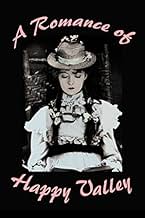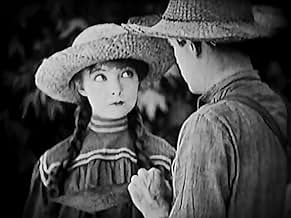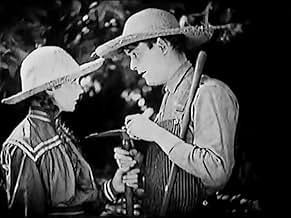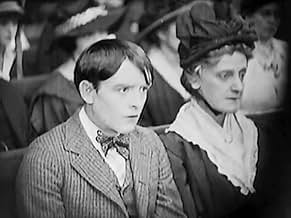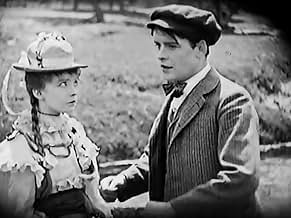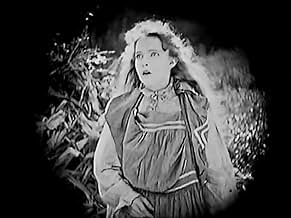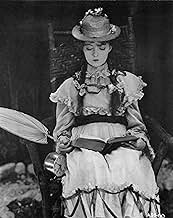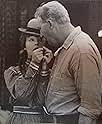John Logan leaves his parents and sweetheart in bucolic Happy Valley to make his fortune in the city. Those he left behind become miserable and beleaguered in his absence, but after several ... Read allJohn Logan leaves his parents and sweetheart in bucolic Happy Valley to make his fortune in the city. Those he left behind become miserable and beleaguered in his absence, but after several years he returns, a wealthy man.John Logan leaves his parents and sweetheart in bucolic Happy Valley to make his fortune in the city. Those he left behind become miserable and beleaguered in his absence, but after several years he returns, a wealthy man.
Carol Dempster
- Girl John Logan meets in New York
- (uncredited)
- Director
- Writers
- All cast & crew
- Production, box office & more at IMDbPro
Storyline
Did you know
- TriviaBelieved lost for almost 50 years, a print was discovered in 1965 in the State Film Archives of the Soviet Union, which donated it to the Museum of Modern Art.
Featured review
A ROMANCE OF HAPPY VALLEY (Famous Players, 1919), is a small production directed by a major director, D. W. Griffith, in a simple-minded story set in a the birthplace of his old Kentucky home. Featuring a cast of Griffith stock players ranging from Robert Harron, Lillian Gish, Kate Bruce and George Fawcett, this photo-play centers mostly on Harron, close to physically resembling Richard Barthelmess during his opening scenes as a hillbilly youth sporting a straw hat and overalls to his physical self during the latter half in a mature manner with mustache, sideburns, hat and suit, with Gish in pig-tales or shoulder-length hair as his loyal girlfriend.
Opening title: "What a better place for a romance than old Kentucky in the county of MAKE BELIEVE, on the pike that never was." Happy Valley, as stated, takes place in Kentucky. John L. Logan Jr. (Robert Harron) is a country boy whose parents (George Fawcett and Kate Bruce) are lifelong farmers. After meeting with Judas (Bertram Grassby), a visiting city man, Johnny yearns on departing his no-future existence by bettering himself in the big city. Jennie Timberlake (Lillian Gish), also known as "Forgetful Jennie," who lives next door with her widowed father (George Nichols), has loved Johnny since their childhood and fears of losing him if he should go. However, against his father's wishes, but the blessing from his mother, Johnny heads for New York on the next train and intends on coming home once he becomes successful. During his absence, Jennie continues to think about him, even by placing one of his old jackets onto a scarecrow in the cornfields and conversing with it during her moments of loneliness. As for Johnny, he obtains employment at the Eastern Toy Manufacturing Company, hoping to make a fortune with his invention of a swimming mechanical frog. After spending eight years perfecting this, he earns his $1,000 to return home where he finds drastic changes have occurred. Aside from finding Jennie an old maid and his parents in the process of losing their farm, he suddenly finds himself mistaken for a bank robber on the loose. The supporting players consist of Adolph Lestina (Vinegar Watkins); Porter Strong (The Negro Farmhand); and Carol Dempster (making her debut under Griffith, appearing unbilled, as a city girl).
Griffith brings forth an age taken from his own upbringing by transferring the wholesomeness of rural Kentucky to the screen, ranging from a middle-aged country woman (Lydia Yeamans Titus) smoking their pipes while sitting in rocking chairs of their front porch; community gathering together at the Locust Grove Church every Sunday; hard-working farmers knowing no other life outside their community; while little Jennie (Gish) uses the Farmer's Almanac to get the latest fashion designs to impress Johnny.
As with hundreds to thousands of silent movies distributed during this period, A ROMANCE OF HAPPY VALLEY was one of many that had been lost for many years. With the help of film historian Eileen Bowser of the Museum of Modern Art in New York City, a print was located in Russia. Aside from its limited presentations at the MOMA's film department, it finally made it to television by becoming the initial movie shown on the public broadcasting eight-week series (June-August 1978) titled "Lost and Found" (premiering June 24, 1978) hosted by Richard Schickel based on WNET, Channel 13, in New York City. After the 55-minute presentation, a ten-minute Griffith short, THE LADY AND THE MOUSE (1913), starring Lillian Gish and Lionel Barrymore followed, concluding the premiere episode with an after-film discussion between Schickel and Gish herself. By the expression on her face, she appeared surprised to hear how much Schickel enjoyed the movie, taken from perspective that it's a very old-fashioned story with limited appeal to contemporary audiences. Gish went on to discuss other lost Griffith film titles and going in depth about her leading man, Robert Harron, as being one of the few actors personally trained by Griffith himself, and how his career was cut short due to a premature accidental shooting in 1920. Out of circulation since then, HAPPY VALLEY has had its limitations on video cassette in 1997 through Critic's Choice Masterpiece/Killian Collection accompanied by a piano score. Cable television presentation includes Turner Classic Movies (TCM premiere: October 22, 2024) at 78 minutes, as opposed to its original 55-minute 1978 showing.
Not in the large-scale sense of the two-hour plus epics as Griffith's earlier features of THE BIRTH OF A NATION (1915), INTOLERANCE (1916) and HEARTS OF THE WORLD (1918), HAPPY VALLEY, resembles that of a small film based on a short story. Also credited by Griffith as its author, it's scenario simply comes close to his own heart, and it shows. This was Griffith's heritage. These were his people enacted on screen. This was his hometown of "make believe" known as Happy Valley. (**1/2)
Opening title: "What a better place for a romance than old Kentucky in the county of MAKE BELIEVE, on the pike that never was." Happy Valley, as stated, takes place in Kentucky. John L. Logan Jr. (Robert Harron) is a country boy whose parents (George Fawcett and Kate Bruce) are lifelong farmers. After meeting with Judas (Bertram Grassby), a visiting city man, Johnny yearns on departing his no-future existence by bettering himself in the big city. Jennie Timberlake (Lillian Gish), also known as "Forgetful Jennie," who lives next door with her widowed father (George Nichols), has loved Johnny since their childhood and fears of losing him if he should go. However, against his father's wishes, but the blessing from his mother, Johnny heads for New York on the next train and intends on coming home once he becomes successful. During his absence, Jennie continues to think about him, even by placing one of his old jackets onto a scarecrow in the cornfields and conversing with it during her moments of loneliness. As for Johnny, he obtains employment at the Eastern Toy Manufacturing Company, hoping to make a fortune with his invention of a swimming mechanical frog. After spending eight years perfecting this, he earns his $1,000 to return home where he finds drastic changes have occurred. Aside from finding Jennie an old maid and his parents in the process of losing their farm, he suddenly finds himself mistaken for a bank robber on the loose. The supporting players consist of Adolph Lestina (Vinegar Watkins); Porter Strong (The Negro Farmhand); and Carol Dempster (making her debut under Griffith, appearing unbilled, as a city girl).
Griffith brings forth an age taken from his own upbringing by transferring the wholesomeness of rural Kentucky to the screen, ranging from a middle-aged country woman (Lydia Yeamans Titus) smoking their pipes while sitting in rocking chairs of their front porch; community gathering together at the Locust Grove Church every Sunday; hard-working farmers knowing no other life outside their community; while little Jennie (Gish) uses the Farmer's Almanac to get the latest fashion designs to impress Johnny.
As with hundreds to thousands of silent movies distributed during this period, A ROMANCE OF HAPPY VALLEY was one of many that had been lost for many years. With the help of film historian Eileen Bowser of the Museum of Modern Art in New York City, a print was located in Russia. Aside from its limited presentations at the MOMA's film department, it finally made it to television by becoming the initial movie shown on the public broadcasting eight-week series (June-August 1978) titled "Lost and Found" (premiering June 24, 1978) hosted by Richard Schickel based on WNET, Channel 13, in New York City. After the 55-minute presentation, a ten-minute Griffith short, THE LADY AND THE MOUSE (1913), starring Lillian Gish and Lionel Barrymore followed, concluding the premiere episode with an after-film discussion between Schickel and Gish herself. By the expression on her face, she appeared surprised to hear how much Schickel enjoyed the movie, taken from perspective that it's a very old-fashioned story with limited appeal to contemporary audiences. Gish went on to discuss other lost Griffith film titles and going in depth about her leading man, Robert Harron, as being one of the few actors personally trained by Griffith himself, and how his career was cut short due to a premature accidental shooting in 1920. Out of circulation since then, HAPPY VALLEY has had its limitations on video cassette in 1997 through Critic's Choice Masterpiece/Killian Collection accompanied by a piano score. Cable television presentation includes Turner Classic Movies (TCM premiere: October 22, 2024) at 78 minutes, as opposed to its original 55-minute 1978 showing.
Not in the large-scale sense of the two-hour plus epics as Griffith's earlier features of THE BIRTH OF A NATION (1915), INTOLERANCE (1916) and HEARTS OF THE WORLD (1918), HAPPY VALLEY, resembles that of a small film based on a short story. Also credited by Griffith as its author, it's scenario simply comes close to his own heart, and it shows. This was Griffith's heritage. These were his people enacted on screen. This was his hometown of "make believe" known as Happy Valley. (**1/2)
Details
- Release date
- Country of origin
- Languages
- Also known as
- The Romance of Happy Valley
- Production company
- See more company credits at IMDbPro
- Runtime1 hour 16 minutes
- Color
- Sound mix
- Aspect ratio
- 1.33 : 1
Contribute to this page
Suggest an edit or add missing content

Top Gap
By what name was A Romance of Happy Valley (1919) officially released in India in English?
Answer
